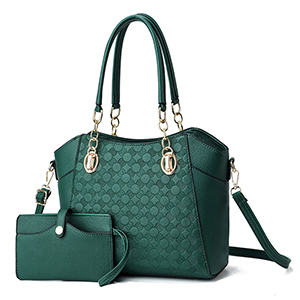Replica handbags have become a growing phenomenon in the fashion world, creating both intrigue and concern. These imitation bags, designed to mimic luxury brands like Louis Vuitton, Gucci, and Chanel, offer consumers the opportunity to carry a designer-inspired accessory at a fraction of the cost. While the allure of owning a look-alike of high-end luxury bags is tempting to many, it raises questions about authenticity, intellectual property, and the long-term implications for both the consumer and the fashion industry. One of the main reasons for the surge in replica handbag popularity is affordability. Luxury bags, often costing thousands of dollars, are out of reach for many fashion enthusiasts. Replica handbags provide an opportunity for individuals to enjoy the status and style associated with designer brands without breaking the bank. With advancements in manufacturing, replicas have become so sophisticated that they are often indistinguishable from the originals, making them even more attractive to buyers who crave luxury but cannot justify the hefty price tag.

Social media has also played a crucial role in fueling the replica handbag trend. Influencers and fashion bloggers often showcase designer-inspired pieces, subtly normalizing the use of replicas. As images of luxury styles flood Instagram and TikTok, consumers are increasingly exposed to the desire for high-end fashion, even if it means settling for a counterfeit version. Despite the appeal, replica handbags come with significant ethical and legal concerns. Counterfeit products directly violate intellectual property laws, as they infringe on the designs and trademarks of luxury brands. Major fashion houses invest significant resources in creating unique products, from innovative designs to the finest materials. When replicas flood the market, they dilute the exclusivity and value of these original creations. In some cases, the sale of counterfeit goods has been linked to larger criminal enterprises, including organized crime and human trafficking, adding a dark undercurrent to what may seem like a harmless fashion choice.
Beyond the legal and ethical dimensions, the environmental impact of replica handbags is another growing issue. Luxury brands often emphasize sustainability by sourcing high-quality materials and implementing eco-friendly practices. In contrast, Replica Bags are typically mass-produced with little regard for environmental regulations. The materials used are often of inferior quality, leading to short product lifespans, contributing to waste and pollution. Consumers may save money in the short term, but the long-term environmental costs can be significant. While some argue that replica handbags democratize fashion by making luxury designs accessible to the masses, the consequences for both the fashion industry and broader society cannot be overlooked. The rise of replicas not only challenges the integrity of high-end brands but also raises complex questions about consumer responsibility, sustainability, and ethics. Ultimately, the replica handbag trend may offer short-term gratification, but it comes at a cost far greater than the price tag on the bag itself. As fashion continues to evolve, so will the conversation around authenticity, and consumers may need to weigh their desire for luxury against the broader impact of their choices.
 Olive oil, often-referred to as liquid gold in Crete, is a key ingredient in every dish, and sampling it fresh from a local farm is an unforgettable experience. The heart of
Olive oil, often-referred to as liquid gold in Crete, is a key ingredient in every dish, and sampling it fresh from a local farm is an unforgettable experience. The heart of  With a wide variety of styles available, from classic totes to trendy crossbody bags, individuals can find pieces that fit their unique tastes and lifestyles. Whether it is a chic handbag for everyday use or an elegant clutch for a special occasion, the options are endless. This diversity makes it easy to curate a collection that reflects personal style without overspending. Quality is a significant factor to consider when exploring replica bags. While some may associate replicas with inferior craftsmanship, many high-quality replicas are made using durable materials that ensure longevity. These bags often undergo meticulous production processes, replicating the details and finishes of luxury bags, thereby providing a satisfactory experience for the user. Investing in well-made replicas not only enhances the overall look but also guarantees that the bag will stand the test of time. In addition to aesthetics and quality,
With a wide variety of styles available, from classic totes to trendy crossbody bags, individuals can find pieces that fit their unique tastes and lifestyles. Whether it is a chic handbag for everyday use or an elegant clutch for a special occasion, the options are endless. This diversity makes it easy to curate a collection that reflects personal style without overspending. Quality is a significant factor to consider when exploring replica bags. While some may associate replicas with inferior craftsmanship, many high-quality replicas are made using durable materials that ensure longevity. These bags often undergo meticulous production processes, replicating the details and finishes of luxury bags, thereby providing a satisfactory experience for the user. Investing in well-made replicas not only enhances the overall look but also guarantees that the bag will stand the test of time. In addition to aesthetics and quality,  Moreover, eco-friendly cleaning agents are typically fragrance-free or use natural scents, minimizing the risk of triggering allergies caused by synthetic fragrances. One of the main benefits of eco-friendly carpet cleaning is its ability to eliminate allergens without compromising the integrity of the carpet fibers. Harsh chemicals can degrade carpets over time, causing them to wear out faster and lose their softness. By using natural products, eco-friendly services help preserve the longevity of carpets, saving homeowners from frequent replacements and reducing waste. In addition, eco-friendly carpet cleaning processes often involve advanced technologies like steam cleaning or hot water extraction, which not only remove deep-seated dirt but also sanitize the carpet by killing bacteria and dust mites using heat. Traditional carpet cleaning methods can be wasteful, using excessive amounts of water that take longer to dry, creating an environment where mold and mildew can thrive. Eco-friendly services focus on low-moisture cleaning techniques that reduce water usage and promote faster drying times, reducing the likelihood of mold growth.
Moreover, eco-friendly cleaning agents are typically fragrance-free or use natural scents, minimizing the risk of triggering allergies caused by synthetic fragrances. One of the main benefits of eco-friendly carpet cleaning is its ability to eliminate allergens without compromising the integrity of the carpet fibers. Harsh chemicals can degrade carpets over time, causing them to wear out faster and lose their softness. By using natural products, eco-friendly services help preserve the longevity of carpets, saving homeowners from frequent replacements and reducing waste. In addition, eco-friendly carpet cleaning processes often involve advanced technologies like steam cleaning or hot water extraction, which not only remove deep-seated dirt but also sanitize the carpet by killing bacteria and dust mites using heat. Traditional carpet cleaning methods can be wasteful, using excessive amounts of water that take longer to dry, creating an environment where mold and mildew can thrive. Eco-friendly services focus on low-moisture cleaning techniques that reduce water usage and promote faster drying times, reducing the likelihood of mold growth.

